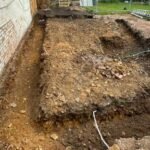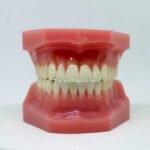Ever wondered how data is collected accurately? Data acquisition is the process of gathering information from various sources. It’s essential for making informed decisions, whether in business, science, or technology. But how do you ensure you’re collecting the right data in the right way?
In this beginner’s guide, we’ll break down the basics of data acquisition and show you how to get started. Ready to learn how to collect accurate data? Let’s dive in!
Repeat Measurements
Repeat measurements help improve the reliability of your results. Taking the same measurement multiple times reduces the effect of random errors. It also helps identify any unusual or inconsistent readings. This process is especially useful in experiments or fieldwork where conditions may change slightly.
Using repeat measurements supports strong data acquisition by increasing confidence in your findings. It ensures your collected data is more accurate and trustworthy. Overall, repeat measurements are a simple but powerful tool in any data collection process.
Understand the Context
Understanding the context is important when collecting data. It means knowing the purpose of your measurements and the environment where you are collecting data. Every situation is different, and the type of data you need can change depending on your goal.
When you understand the context, you can choose the right tools and methods for data collection. Knowing the context also lets you interpret the results correctly. This way, your data will be useful and help you make better decisions.
Use Calibrated Instruments
Using calibrated instruments is essential for collecting accurate data. Calibration ensures that your tools give correct and reliable measurements. Over time, instruments can become less accurate, so it’s important to check them regularly. A calibrated instrument helps you avoid errors and ensures your data is trustworthy.
Before starting any data collection, make sure your instruments are calibrated. This step improves the quality of your measurements and gives you confidence in your results. Whether it’s a thermometer, scale, or sensor, using properly calibrated instruments will lead to more accurate data and better decision-making.
Record Your Data Carefully
Recording your data carefully is very important for accuracy. Write down your measurements as soon as you take them to avoid forgetting or mixing them up. Keep your records clear and organized. It’s also helpful to include details like the time, date, and any conditions that might affect the results.
Whether you’re writing by hand or using a digital tool, staying consistent helps prevent mistakes. Double-check your entries to ensure everything is correct. By recording your data carefully, you can be sure your findings are reliable and useful for future analysis.
Choosing the Right Tools for Data Collection
Recording your data carefully is essential for successful data acquisition. Write down your measurements as soon as possible to avoid errors. Delaying can cause you to forget important details. Keep your data organized in a clear and simple way.
Always follow the same format when recording your data. Whether you are using paper or a digital tool, consistency is important. Double-check your entries to ensure they are correct. Careful recording in your data acquisition process leads to more accurate and reliable results that you can trust.
Learn More About the Basics of Data Acquisition
In conclusion, understanding the basics of data acquisition is essential for anyone interested in working with data. It helps you collect accurate information and make informed decisions.
By mastering these fundamentals, you can build a strong foundation for more advanced data analysis.
Looking for more tips and ideas? We’ve got you covered. Check out some of our other posts now.
















